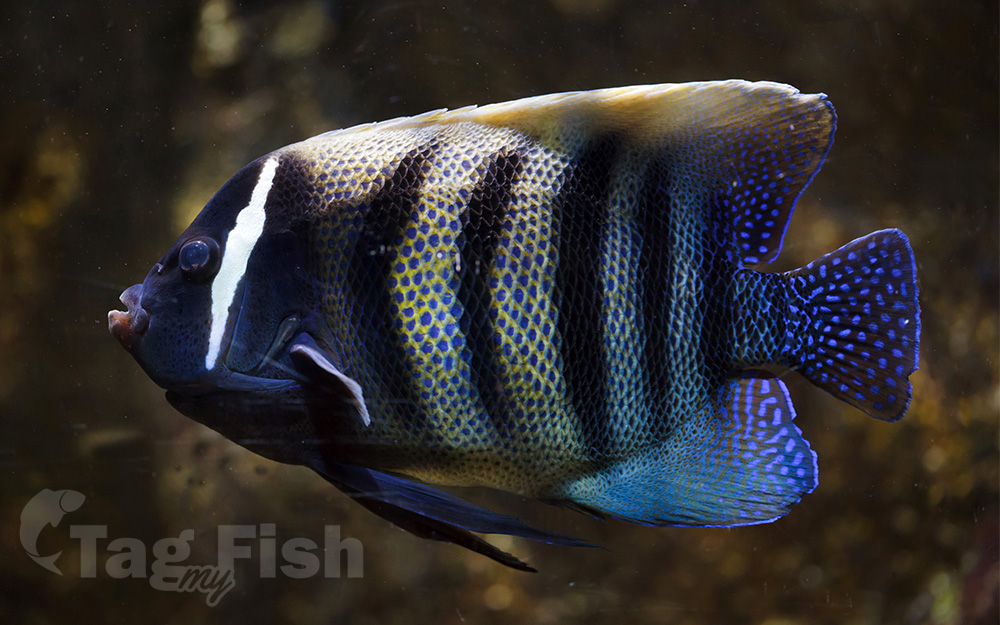Sixbar angelfish
(Pomacanthus sexstriatus)

Classification
General data
The sixbar angelfish, like other members of the genus Pomacanthus, has juveniles and adults which look quite different.
The juveniles have an overall blue black colour broken by many vertical white bands, the anterior bands being rather straight while the posterior bands become increasingly arced as they approach the tail.
The adults have an overall colour of brownish-yellow on the body and the median fins, with vivid blue spots. Along the flanks there are 6 vertical bands, the first is whitish and is placed immediately behind the head, the following 5 are black.
This species can reach a total body length of about 46 cm (18 in) in the ocean.
These angelfishes have 13-14 spines and 18-23 soft rays in the dorsal fin and 3 spines and 18-19 soft rays in the anal fin.
The sixbar angelfish is found from Sri Lanka through the Male Archipelago to the Solomon Islands, north to the Ryukyu Islands of Southern Japan and Palau and south to New Caledonia and Australia.
In Australia it extends from Shark Bay in Western Australia along the northern coast to the Capricorn and Bunker Group off Queensland. They are also found around the Rowley Shoals and Scott Reef of Western Australia, and Ashmore Reef in the Timor Sea.











